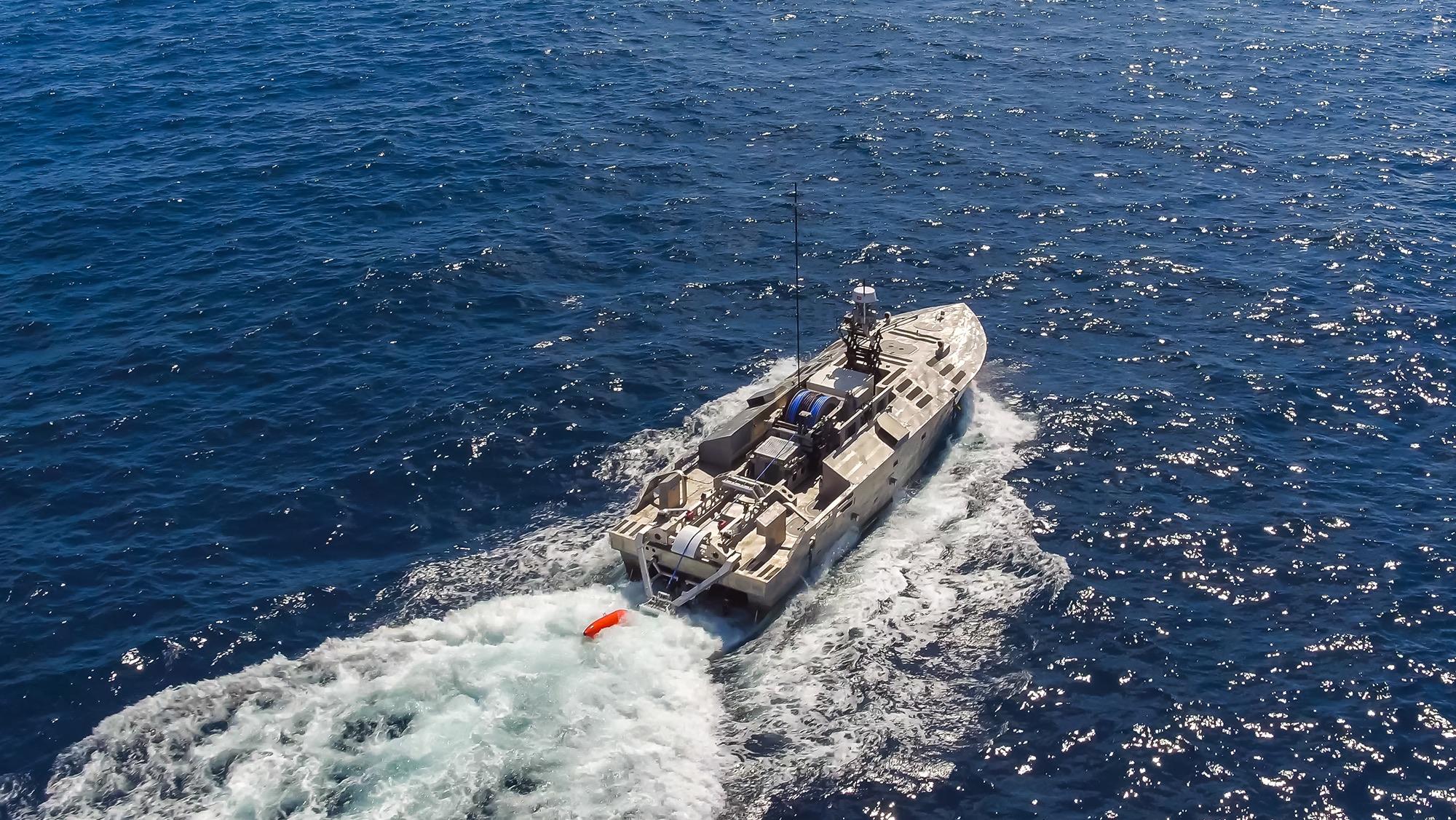
Textron’s Common Unmanned Surface Vehicle is part of the Navy’s UISS effort. (Image courtesy of Textron.)
WASHINGTON: The Navy’s unmanned surface vessel program developed to clear undersea mines for warships experienced significant problems during testing late last year that prevented the service from collecting necessary data for operational evaluations, according to recently revealed Pentagon test information.
The program, dubbed the Unmanned Influence Sweep System, consists of a USV, radar, surveillance camera and other capabilities that effectively allow it to clear mines from an assigned area such as a sea lane or choke point. The USV will play a key role in the service’s mine countermeasures mission as the legacy MCM-1 class Mine Countermeasures Ships and MH-53E helicopters are retired. That’s if it works.
“The UISS itself and littoral combat ship launch and recovery systems experienced problems throughout the testing, causing system unavailability and degraded mission performance,” said the “controlled unclassified information” (CUI) version of the Pentagon’s operational test and evaluation’s annual report, which was published online today by the Project on Government Oversight.
The Pentagon this year produced two versions of DOT&E’s report: a public report and a non-public version containing the CUI that was available to members of Congress and defense officials. The new information about UISS’ problems during testing were only included in the CUI report, which the military did not make public.
The non-public report paints a much clearer picture of the problems UISS experienced than the public report, which only referenced “maintenance issues.”
“Maintainers demonstrated limited capability to repair the UISS due to deficiencies in maintainer documentation for operational-level repairs and additional repairs that required subject matter expert intervention,” according to DOT&E.
The issues “prevented the Navy from collecting substantial amounts of planned test data. The Navy expects to complete UISS [initial operational test and evaluation] in early FY22 to support a full-rate production decision scheduled for April 2022.”
Breaking Defense had repeatedly sought an interview with Navy officials last year at the conclusion of UISS testing, but the service declined. A Navy spokesman did not respond to questions about the CUI report as of press time.
In the wake of the Pentagon’s decision to withhold certain details from the public in the annual testing report, Breaking Defense reported the move has angered lawmakers in both the House and Senate.
CUI is different from the three levels of classified information. The advent of classified information – confidential, secret and top secret – came during the mid-20th century and each level is associated with how grave a national security threat its public release would cause for the United States.
CUI was established much more recently by an executive order issued from the Obama administration. It describes CUI as “information that requires safeguarding or dissemination controls pursuant to and consistent with applicable law, regulations, and government-wide policies but is not classified,” according to the National Archives.
The Pentagon’s rationale for using it with the Pentagon tester’s annual report was, according to acting head of the DOT&E office Raymond O’Toole, that some of the unclassified information “shouldn’t wind up in our adversaries’ hands.”
Shipbuilder Austal USA names Michelle Kruger as new president
Kruger had been serving as interim president since former chief Rusty Murdaugh resigned last spring.



























